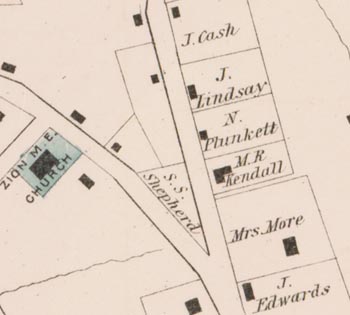Lesson Plan - Reading Maps for Town Size in North Carolina
A Lesson Plan for Grade 2 Social Studies
By Jennifer Job, School of Education, UNC-Chapel Hill
Objective: Students will look at soil survey maps to draw conclusions about the impact North Carolinians have on their state.
This worksheet is available to be printed and distributed. Download the worksheet by clicking the title: town_size_k12.pdf

Time Required: 30 minutes.
Materials:
- Computer lab
- Worksheet (.pdf)
- Projector
Teacher Instructions:
- Project a highway map from 1979 (http://dc.lib.unc.edu/u?/ncmaps,1658) onto the screen.
- Remind students of the skills they already know when reading maps. Ask them to point out directions (e.g., north, southeast, etc.), bodies of water, and mountains.
- Explain that this is a highway map, which shows the major roads connecting towns. Point out that the thicker and darker the line, the bigger the road. Then explain that we can also decide where major cities are versus small towns with the same idea—the bigger the font (or size of the word) and darker the words, the bigger the town is. Ask them why knowing this would be important (i.e., deciding where to stop on a trip, or where to move for a job).
- Hand out a worksheet to each student. Have them bring up the 1910 Highway map on their screen (http://dc.lib.unc.edu/u?/ncmaps,950). Bring the same URL up on the LCD projector so you can give hints as to direction.
- For each pair of towns, the students have to decide which is bigger, or if they're the same size, just by how big the word is. They should circle the correct answer.
- Do the same exercise with the map from 1940 (http://dc.lib.unc.edu/u?/ncmaps,835) and 2000 (http://dc.lib.unc.edu/u?/ncmaps,1670) maps. Help them find the towns if need be, or if reading skills are low.
- Go over the right answers. Ask the students to think about why New Bern and Bayboro may seem the same size in 1910, but New Bern is much bigger in 1940. Ask them to identify other towns that they saw grow over time. You can also look at your own town in 1910, 1940, and then 2000 and decide whether it's gotten bigger, smaller, or stayed the same.
Assessment: Worksheets may be collected.
North Carolina Curriculum Alignment: Second grade map-reading skills.
